New PET tracer enables same-day imaging of triple-negative breast and urothelial cancers
Powered by WPeMatico
Powered by WPeMatico
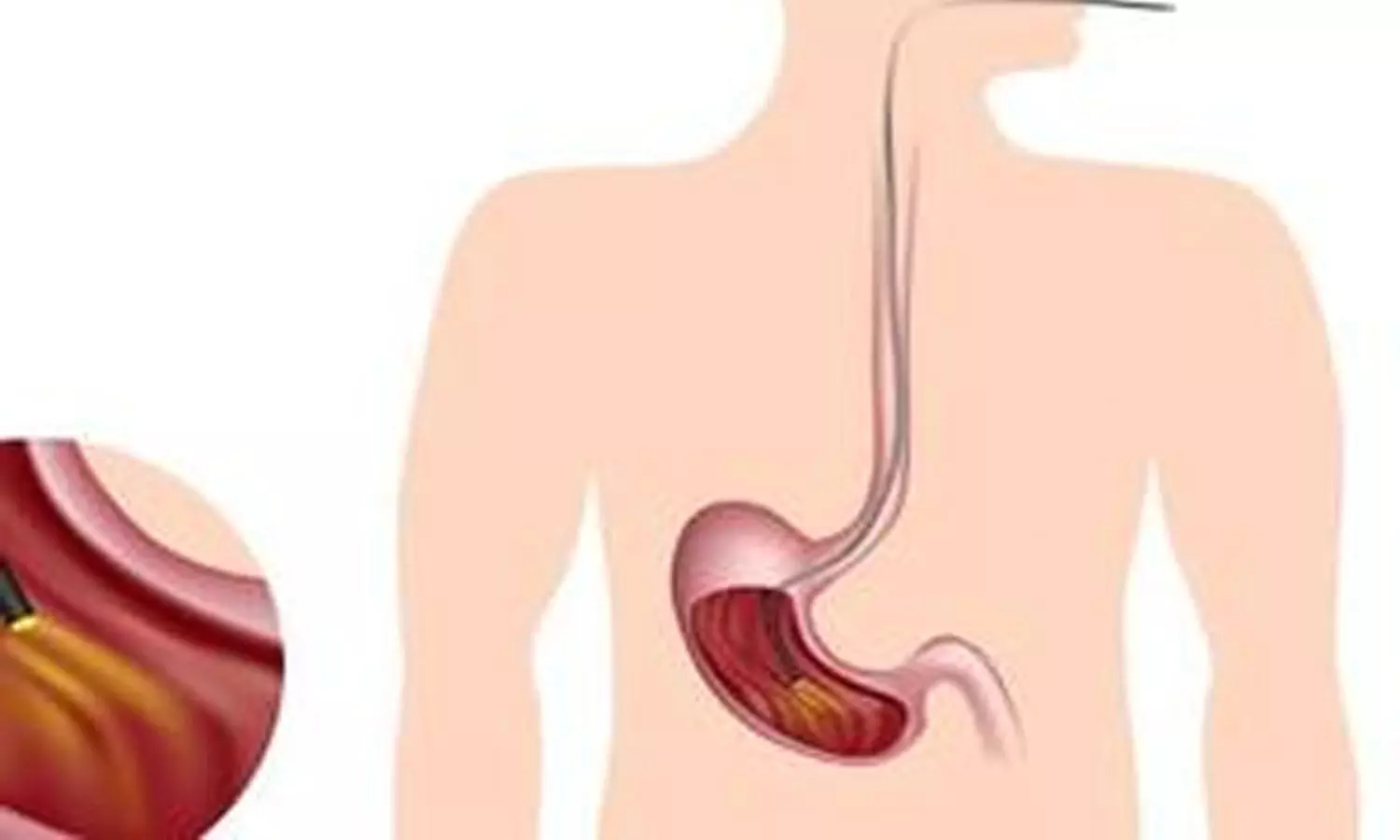
China: Using a simple nasopharyngeal airway before painless gastrointestinal endoscopy can dramatically cut the risk of dangerous oxygen drops in obese outpatients, new research in Respiratory Medicine has reported.
Powered by WPeMatico
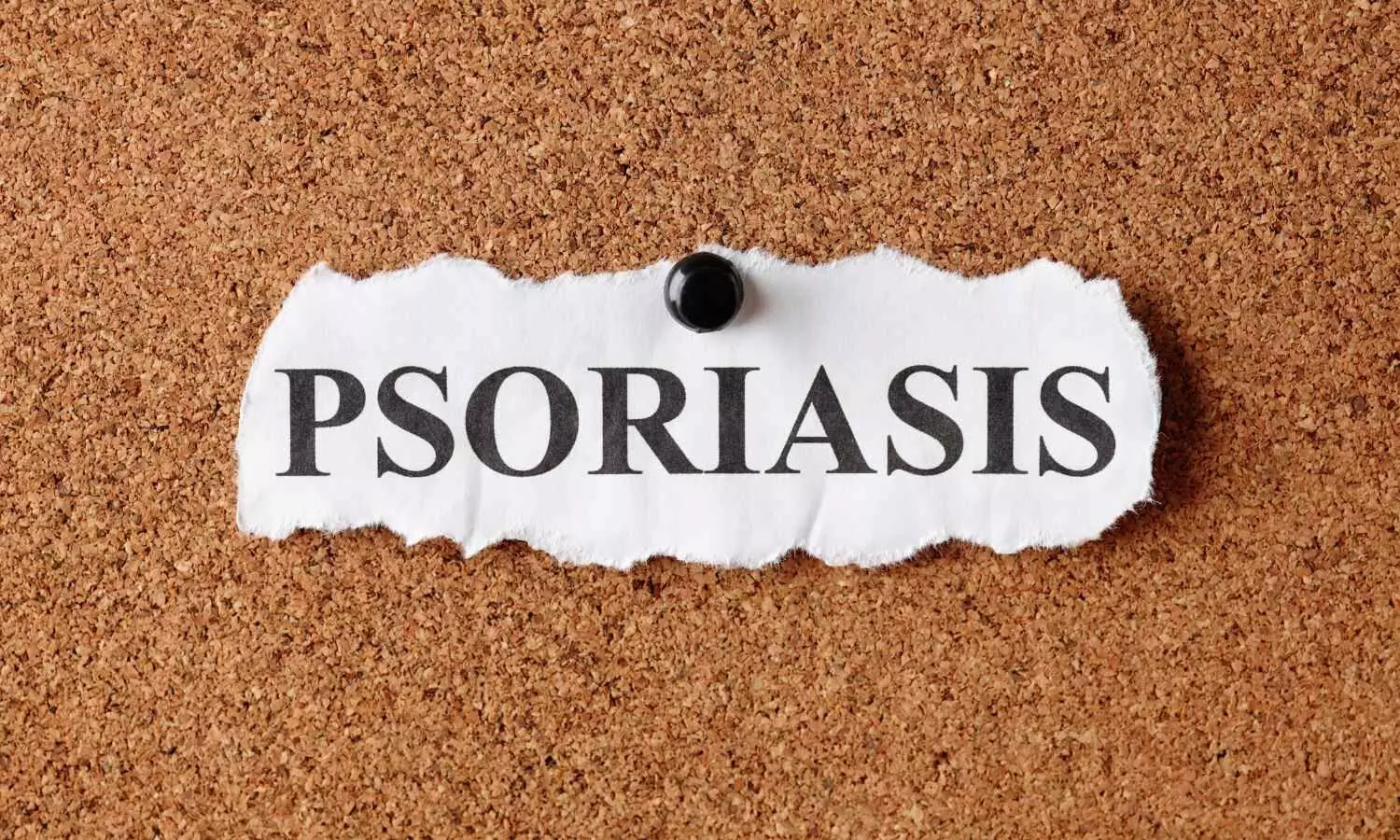
A study presented at the European Academy of Dermatology and Venereology (EADV) Congress 2025 found that individuals with psoriasis face a significantly increased risk of developing age-related macular degeneration (AMD).
Psoriasis is a chronic, systemic inflammatory disease with multiple comorbidities, including cardiovascular disease and diabetes. This study is among the largest to date investigating whether psoriasis also predisposes individuals to AMD, an eye disease affecting millions worldwide.
Dr. Alison Treichel and her team conducted a 15-year retrospective cohort study using data from the US TriNetX collaborative network. The study included 22,901 patients over the age of 55 with psoriasis and compared their outcomes with three propensity-matched control groups: individuals with melanocytic nevi (MN) to represent other dermatology patients; patients diagnosed with major depressive disorder (MDD) to account for chronic disease and healthcare use; and patients who had undergone an ophthalmologic exam to ensure comparable opportunities for AMD diagnosis. Individuals with a prior diagnosis of AMD were excluded.
In a separate analysis, psoriasis patients treated with biologics were compared to those treated with topical corticosteroids who had not received biologics before or during the follow-up period.
Over the 10-year follow up period, people with psoriasis had a higher likelihood of developing AMD compared with patients in the MDD and MN cohorts, with a 56% and 21% increased risk, respectively. Looking at the two main forms of AMD – exudative (wet) and non-exudative (dry) – psoriasis was associated with a 40% and 13% higher risk, respectively, compared with the MDD cohort.
“Psoriasis is a systemic inflammatory disease in which lipid dysregulation contributes to cardiovascular disease,” explained Dr. Treichel. ““Because abnormal lipid deposition in the retina is a hallmark of age-related macular degeneration, particularly the dry form that causes progressive vision loss, it is biologically plausible that psoriasis could increase AMD risk. Our study is the first to demonstrate a novel association between psoriasis and non-exudative (dry) AMD and serves as a hypothesis generating observation for future studies”
Notably, psoriasis patients treated with biologic therapies had a 27% lower risk of developing AMD compared with biologic-naïve patients treated with topical corticosteroids only.
“Our findings support a connection between psoriasis and AMD, both exudative and non-exudative, which could be mediated by shared lipid dysregulation,” Dr. Treichel explained. “They also suggest that biologic therapies could offer protective benefits beyond skin symptoms. Further research is needed to determine whether these treatments have a true disease-modifying effect and to better understand the role of shared risk factors, including smoking, obesity, cardiovascular disease, and access to specialist care.”
Dr. Treichel emphasised that individuals with psoriasis should remain vigilant. “Patients with psoriasis should continue to follow standard eye exam guidelines and promptly report any changes in their vision to their healthcare providers. More research is needed before specific screening recommendations can be made.”
Looking ahead, the research team plans to build on these findings by analysing retinal imaging data from psoriasis patients to better characterise ocular abnormalities, define the prevalence of AMD, and evaluate the long-term effects of biologic therapy on disease progression.
Reference:
Psoriasis linked to increased risk of vision-threatening eye disease, study finds, Beyond, Meeting: EADV Congress 2025
Powered by WPeMatico

GLP-1 receptor agonists like Ozempic can be a lifeline for people with diabetes — helping stabilize blood glucose and lose weight which contributes to diabetes complications. But not everyone benefits equally. Scientists monitoring 92 individuals with diabetes in Japan over their first year of taking GLP-1 drugs found that people’s reasons for overeating may affect the success of these therapies. Individuals who overeat in response to the sight or smell of tasty food were most likely to respond well to the drugs in the long term, whereas individuals who overeat for emotional reasons were less likely to.
“Pre-treatment assessment of eating behavior patterns may help predict who will benefit most from GLP-1 receptor agonist therapy,” said Prof Daisuke Yabe of Kyoto University, senior author of the article in Frontiers in Clinical Diabetes and Healthcare. “GLP-1 receptor agonists are effective for individuals who experience weight gain or elevated blood glucose levels due to overeating triggered by external stimuli. However, their effectiveness is less expected in cases where emotional eating is the primary cause.”
How people eat
GLP-1 receptor agonists help lower blood glucose through several mechanisms, including boosting insulin secretion, and cause weight loss by modifying appetite. But not everyone loses weight while taking them. To investigate this problem, the researchers focused on people’s relationship to food, and what that might mean for their treatment.
They enrolled 92 people with type 2 diabetes beginning treatment with GLP-1 receptor agonists in Gifu Prefecture, Japan, and tracked their progress during their first year of treatment. At three different points — the beginning of treatment, three months later, and 12 months later — they collected data on participants’ body weight and composition, diet, and a range of relevant blood markers like blood glucose and cholesterol levels. They also asked about their relationship with food.
The scientists were particularly interested in three different types of eating behaviors associated with weight gain: emotional eating, where people eat in response to negative emotions rather than hunger, external eating, where people eat because the food looks great rather than because of hunger, and restrained eating, where people control their diet to lower their weight. In moderation, restrained eating can help with weight loss, but in excess, it can lead to disordered eating.
Different bodies, different results
In general, individuals saw a statistically significant reduction in body weight, cholesterol levels, and body fat percentage over the course of the year, while skeletal muscle mass stayed the same. Blood glucose levels also improved, but the improvements weren’t statistically significant.
However, there were some differences in results based on eating behaviors. At the three-month mark, participants reported more behaviors associated with restrained eating, and fewer behaviors associated with external or emotional eating. However, by the 12-month point, restrained and emotional eating behaviors returned to their baseline levels.
“One possible explanation is that emotional eating is more strongly influenced by psychological factors which may not be directly addressed by GLP-1 receptor agonist therapy,” said Dr Takehiro Kato of Gifu University, second author of the article. “Individuals with prominent emotional eating tendencies may require additional behavioral or psychological support.”
The scientists also didn’t find links between emotional or restrained eating scores at the beginning of treatment and the benefits that participants saw from the drugs by the end of the year. By contrast, the decrease in external eating was sustained over the full year, and people who reported high levels of external eating at the start saw the best results in terms of weight loss and blood glucose levels.
Although this study has the advantage of following individuals with diabetes under real-life conditions, as an observational study using self-reported measures, it can’t determine causation. The researchers also pointed out that this group of people may have been especially highly motivated to try to improve their control over their diabetes, which might have resulted in greater weight loss.
“While our study suggests a potential association between external eating behavior and treatment response to GLP-1 receptor agonists, these findings remain preliminary,” said Yabe. “Further evidence is necessary before they can be implemented in clinical practice. Should future large-scale or randomized controlled trials validate this relationship, incorporating simple behavioral assessments could become a valuable component in optimizing treatment strategies.”
Reference:Yuya Koide1,2,3Takehiro Kato,*Takehiro Kato1,2*Makoto HayashiMakoto Hayashi3Hisashi DaidoHisashi Daido4Takako MaruyamaTakako Maruyama5Takuma IshiharaTakuma Ishihara6Kayoko NishimuraKayoko Nishimura7Shin TsunekawaShin Tsunekawa8Daisuke Yabe,,,*Daisuke Yabe1,2,8,9* on behalf of G-DIET Investigators DOI: 10.3389/fcdhc.2025.1638681 Frontiers in Clinical Diabetes and Healthcare.
Powered by WPeMatico
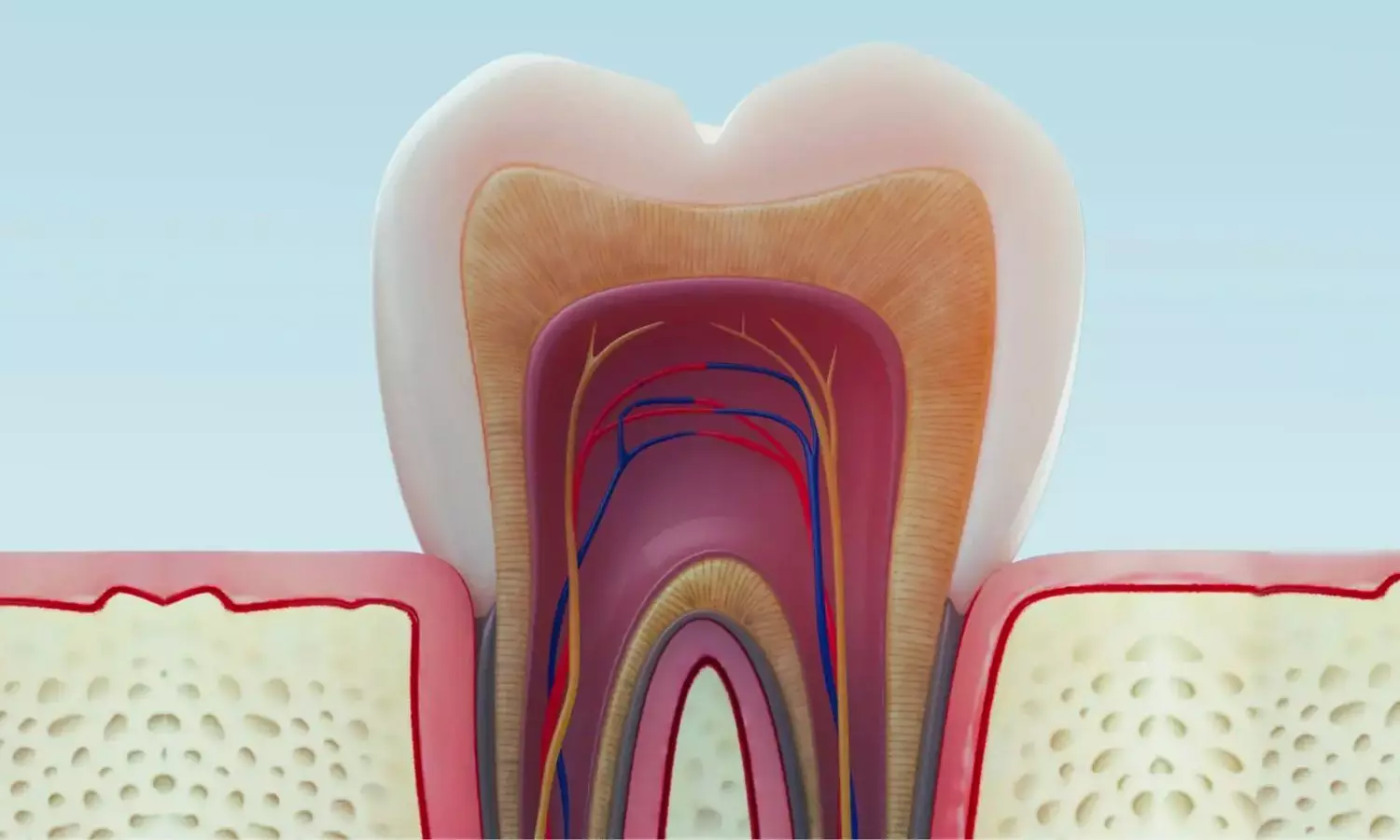
India: 1% phytic acid is a suitable irrigating solution compared to 17% EDTA, as it causes less demineralization of radicular dentin. This conclusion comes from a recent in vitro study published in the Journal of Conservative Dentistry and Endodontics, which assessed the effect of these irrigants on calcium ion loss and the microhardness of root canal dentin.
Powered by WPeMatico

Researchers have found in a large study of 927,130 adults that skipping breakfast raised fracture risk by 18% and late-night dinners by 8%. Smoking also increased risk, while daily alcohol intake, faster walking speed, and adequate sleep were protective, underscoring the role of meal timing in bone health.
People who skip breakfast and eat late dinners may have an increased risk of developing osteoporosis, according to a new study published in the Journal of the Endocrine Society.
Lifestyle habits, such as exercise, alcohol consumption and smoking, are known to increase people’s risk of osteoporosis, however little is known about the association between osteoporotic fracture and diet.
“This study aimed to examine the association between lifestyle habits such as diet, and the risk of osteoporotic fracture,” said study author Hiroki Nakajima, M.D., Ph.D., of Nara Medical University in Nara, Japan. “We found skipping breakfast and having late dinners was associated with an increased risk of osteoporosis. Furthermore, these unhealthy eating habits were found to be linked with the accumulation of other lifestyle risk factors such as physical inactivity, smoking and insufficient sleep.”
The researchers used a large health checkup cohort of 927,130 adults (45.3% male and 54.7% female) from a Japanese claims database to find the association between lifestyle factors and the diagnosis of osteoporotic fracture (hip, forearm, vertebral and humeral fractures).
They found people who had unhealthy habits such as smoking, daily alcohol consumption, not enough exercise or sleep, skipping breakfast, and having late dinners, were more likely to be diagnosed with osteoporosis.
“These results suggest that preventing osteoporosis and fractures requires not only healthy eating habits but also a broader effort to improve overall lifestyle behaviors,” Nakajima said.
Reference:
Hiroki Nakajima, Dietary Habits and Osteoporotic Fracture Risk: Retrospective Cohort Study Using Large-Scale Claims Data, Journal of the Endocrine Society, https://doi.org/10.1210/jendso/bvaf127.
Powered by WPeMatico

The Apgar score was originally developed to standardise the
assessment of term-born infants’ clinical condition at 1 min of life. However,
accumulating research shows that the judgement at 5 and 10 min has better
predictive value for in-hospital mortality and severe neurologic and
non-neurologic morbidities in term-born infants. In very preterm (VPT) infants <32
weeks’ gestation, low 5-min Apgar scores have been consistently associated with
increased risk of mortality, but results on associations with morbidity are
contradictory. The authors from a multinational research collaboration
concluded that low Apgar scores were associated with increased risk for severe
brain injury in preterm infants 24–28weeks but not in a graded manner. The
longer-term prognostic value was called into question in extremely preterm
infants.
Key aims of the present study were to describe variations in
5- min Apgar scores <7 among VPT infants across European countries, to
assess associations with adverse neonatal outcomes and to test whether these
associations differ by country-level variations in low Apgar score prevalence.
itwasaProspective observational population-based cohort
study. In total, 7900 liveborn VPT infants from the EPICE-SHIPS study were
included. Associations between 5-min Apgar scores<7 and adverse neonatal
outcomes were estimated with adjustments for perinatal characteristics. We
tested for interactions by country-level prevalence of an Apgar score<7,
grouped into low (14%–16%), medium (19%–22%) and high (28%–40%).
20.2% of infants had 5-min Apgar score <7 with rates of
14%–40% across countries. A score <7 increased risks of in hospital
mortality, intraventricular haemorrhage (IVH), cystic periventricular
leukomalacia (cPVL), retinopathy of prematurity (ROP), bronchopulmonary
dysplasia (BPD) and length of hospital stay (LHS), but not necrotising
enterocolitis or late-onset infection (LOI). No interactions with country group
were detected for mortality, cPVL and ROP, while associations with IVH, BPD and
LHS were restricted to countries with lower prevalence of scores <7.
In a multinational cohort of VPT infants using data
abstracted following a common, standardised protocol, study provide novel
results on the association of 5-min Apgar score severe outcomes. Three findings
advance the scientific knowledge about the prognostic value of the 5-min Apgar
score in this high-risk population. First, the proportion of VPT infants with
5-min Apgar scores <7 varies largely between European countries. Second,
there is a clinically relevant association of low 5-min Apgar scores with most
adverse neonatal outcomes. This is reassuring as the Apgar score is the first
clinical assessment to judge the vitality of VPT infants after birth. The importance
arises from the fact that the score guides clinical treatment decisions for
stabilisation measures and resuscitation worldwide, although concerns of its
suitability have been raised by researchers and leading medical societies.
Lastly, the variations in strength of associations between adverse outcomes and
low 5-min Apgar score by country suggest the need for context-specific
validation of the Apgar score and risk thresholds. While mortality was not
impacted by country variations in 5-min Apgar scores, this was present for
severe IVH. The latter finding is of relevance for the long-term outcome of VPT
infants, as severe IVH constitutes one of the most devastating acute
morbidities with high impact on the psychomotor outcome.
Early prediction of adverse outcomes remains an unmet need
in research on VPT infants and clinical care. Easy-to-use bedside tests are
required that can guide prompt decisions as well as risk stratification. The
5-min Apgar score has remained a standard assessment tool for more than 70
years despite the advances in clinical care and medical knowledge. One of the
reasons is its easy applicability. Study results and others argue for its
suitability to predict adverse neonatal outcomes after VPT birth. However,
associations are too weak and variability is too high to base treatment
decisions exclusively on the 5-min Apgar score. Multivariable models, combining
the 5-min Apgar score with additional items including medical interventions
after delivery and the new features of artificial intelligence, show promise,
as established for other disease entities like sepsis. This will hopefully lead
to an easy-to-handle tool with high accuracy as established for BPD and ROP
risk calculators. Overall, results encourage initiatives to standardise Apgar
scoring within a European guideline and video tutorials.
Study results indicate that low 5-min Apgar scores <7 are
associated with an unfavourable short-term outcome in VPT infants. The
variations in Apgar scores between the countries underscore the importance of
not only focusing on baseline risks, management and outcomes, but also
considering the interaction with country in routine clinical care and research.
Source: Harald Ehrhardt, Soodabeh Behboodi,
Rolf F. Maier; BJOG: An International Journal of Obstetrics &
Gynaecology, 2025; 0:1–11 https://doi.org/10.1111/1471-0528.18291
Powered by WPeMatico

Breast cancer patients who participated in a remote weight loss intervention program lost an average of 4.7 percent of their baseline body weight after one year, while those in the education only control group gained an average 1 percent of their baseline weight, according to a new report from Dana-Farber Cancer Institute investigators. The findings from the Breast Cancer Weight Loss (BWEL) clinical trial set the stage for ongoing research to determine if weight loss following breast cancer treatment can reduce the risk of cancer recurrence and extend survival.
The results were published in JAMA Oncology.
“This remotely delivered intervention was successful in helping women lose weight across many different patient and treatment factors and it worked well across a large number of sites across the U.S. and Canada,” says Dana-Farber’s Jennifer Ligibel, MD, principal investigator on the study. “These results put us in a great position to be able to determine whether the weight loss program will help reduce the risk of cancer recurrence.”
Obesity is a risk factor for recurrence of breast cancer, other related health problems, and poor quality of life. There is a strong need to find an effective and reliable way to help patients lose weight after diagnosis and treatment for breast cancer.
The Breast Cancer Weight Loss (BWEL) trial, a Phase III trial supported by the National Cancer Institute and the Susan G. Komen Foundation, enrolled nearly 3,180 women from more than 637 cancer treatment centers in the U.S. and Canada. The participants, who had been diagnosed with stage 2 or 3 HER2-negative breast cancer, had completed chemotherapy and radiation therapy (if it was to be administered) and were randomly assigned to receive either a telephone-based weight-loss program plus health education or health education alone. The weight-loss program, conducted by phone, coached patients in reducing their calorie intake and increasing exercise.
In this planned analysis of results for patients after 12-months, 46.5 percent of patients on the weight loss intervention lost 5 percent of their baseline body weight and 22.5 percent lost 10 percent. In contrast, only 14.3 percent of those in the control group lost 5 percent of baseline body weight and 5 percent of controls lost 10 percent. Further, 21.9 percent of controls gained more than 5 percent of baseline body weight compared to 8.2 percent in the weight loss intervention.
“It is very hard after being diagnosed with breast cancer to lose weight and many people gain weight,” says Ligibel. “This study really underscores that it is important to help patients with their weight after a breast cancer diagnosis.”
Patients experienced weight loss on the weight loss intervention regardless of education level, socioeconomic status, and treatment types, including patients on anti-estrogen therapies. The results did show less weight loss in premenopausal, African American, and Latina patients.
“More research is needed to fine tune weight loss interventions for different groups of breast cancer survivors,” says Ligibel.
“Every person deserves the chance to be as healthy as possible after a breast cancer diagnosis. Susan G. Komen is proud to have supported Dr. Ligibel’s pioneering BWEL trial since 2016,” says Kimberly Sabelko, Ph.D., vice president of scientific strategy and programs at Susan G. Komen. “We are so grateful to the patients who are participating in it, as the findings are poised to provide us with evidence-based behavioral interventions that could help many patients live longer, better lives. This initial report demonstrating that weight loss is achievable across a diverse patient population is very encouraging, and we look forward to the long-term results.”
The study provided the intervention in both English and Spanish and provided a toolbox of recipe recommendations to support a range of dietary preferences including vegetarian, vegan, and low-carbohydrate diets. Recipes included Caribbean, Mexican, and Indian foods. Commercial partners supported the trial by donating activity monitors, wireless scales, meal replacement shakes, and food scales for patients to use if desired.
“We tried to meet people where they were as long as they were adhering to a healthy diet, the caloric restrictions, and activity levels,” says Ligibel. “Patients need support and an infrastructure, and this study offers an intervention that works across many sites and across a wide range of people.”
The long-term goal of the BWEL study will be to determine if the intervention reduces breast cancer recurrence. If it does, the program could become something more widely available to patients.
“We are working toward insurance reimbursement for weight loss programs for patients with breast cancer, making this kind of intervention available for patients regardless of their ability to pay for it themselves,” says Ligibel.
Reference:
Jennifer A. Ligibel et al, Impact of a Weight Loss Intervention on 1-Year Weight Change in Women With Stage II/III Breast Cancer, JAMA Oncology (2025). DOI: 10.1001/jamaoncol.2025.2738
Powered by WPeMatico
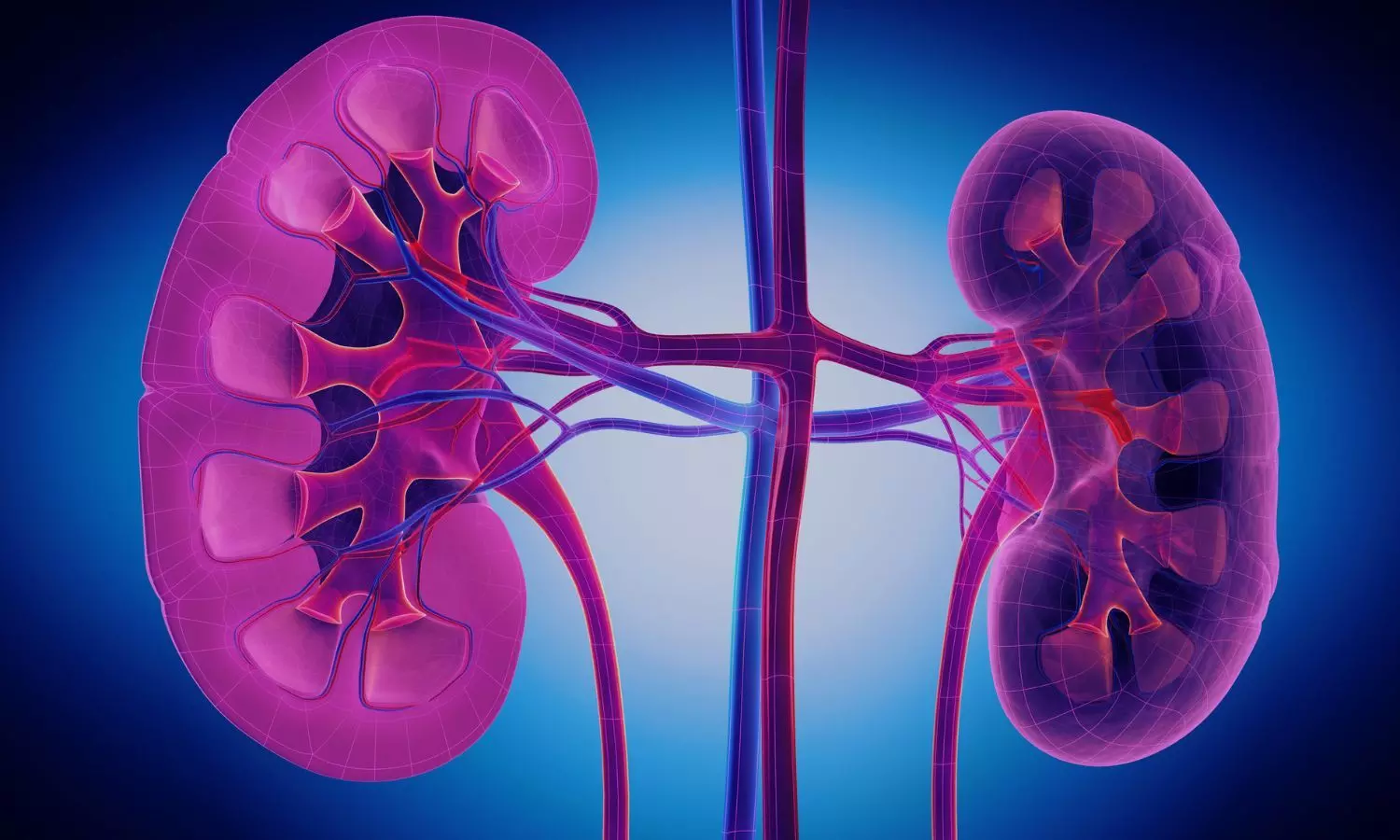
China: The RCR index is linked to higher mortality in diabetic nephropathy patients and can help assess severity and guide ICU treatment.
A new retrospective analysis, published in BMC Nephrology, explored the relationship between the red blood cell distribution width to serum calcium (RCR) ratio and all-cause mortality among critically ill patients with diabetic nephropathy (DN), offering potential insights for prognostic assessment in intensive care settings.
Powered by WPeMatico
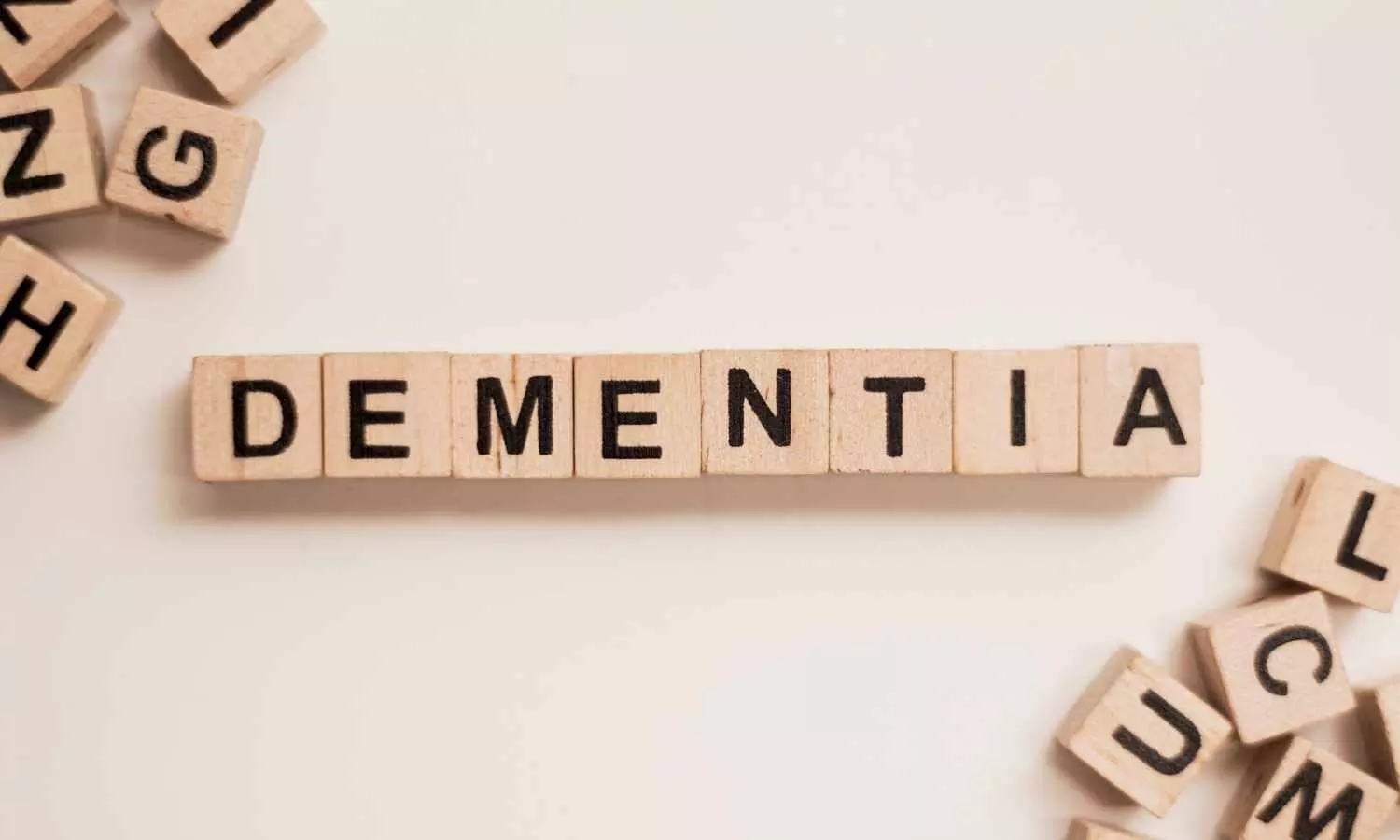
Vascular dementia–cognitive impairment caused by disease in the brain’s small blood vessels-is a widespread problem, but it has not been as thoroughly studied as Alzheimer’s disease, in which abnormal plaques and protein tangles are deposited in neural tissue.
One researcher at The University of New Mexico hopes to change that.
In a newly published paper featured by the editors of the American Journal of Pathology, Elaine Bearer, MD, PhD, the Harvey Family Endowed and Distinguished Professor in the UNM School of Medicine’s Department of Pathology, sets out a new model for characterizing and categorizing different forms of vascular dementia.
She hopes this approach will help researchers to better understand the various forms of the disease and find effective treatments.
Conditions like hypertension, atherosclerosis and diabetes have been linked to vascular dementia, but other contributing causes, including the recent discovery of significant quantities of nano– and microplastics in human brains, remain poorly understood, Bearer said.
“We have been flying blind,” she said. “The various vascular pathologies have not been comprehensively defined, so we haven’t known what we’re treating. And we didn’t know that nano– and microplastics were in the picture, because we couldn’t see them.”
Bearer identified 10 different disease processes that contribute to vascular-based brain injury, typically by causing oxygen or nutrient deficiency, leakage of blood serum and inflammation or decreased waste elimination. These cause tiny strokes that harm neurons. She lists new and existing experimental techniques, including special stains and novel microscopy, to detect them.
For the paper, Bearer used a specialized microscope to meticulously study tissue from a repository of brains donated by the families of New Mexicans who had died with dementia, employing stains that highlighted the damaged blood vessels. Surprisingly, many patients diagnosed with Alzheimer’s disease also had disease in the small blood vessels of the brain.
“We suspect that in New Mexico maybe a half of our Alzheimer’s people also have vascular disease,” she said.
Bearer contends a methodical approach to identifying different forms of vascular dementia will help neurologists and neuropathologists more accurately score the severity of the disease in both living and deceased patients and advance the search for potential treatments — and even cures. To make that happen, the National Institutes of Health (NIH) has raised the possibility of forming a consensus group of leading neuropathologists to work out a new classification and scoring system, she said.
Meanwhile, a fresh area of concern is the unknown health consequences of nano– and microplastics in the brain, Bearer said.
“Nanoplastics in the brain represent a new player on the field of brain pathology,” she said. “All our current thinking about Alzheimer’s disease and other dementias needs to be revised in light of this discovery.”
“What I’m finding is that there’s a lot more plastics in demented people than in normal subjects,” she said. “It seems to correlate with the degree and type of dementia.”
The quantity of plastics also was associated with higher levels of inflammation, she said.
Bearer’s work builds on years of collaboration with Gary Rosenberg, MD, professor of Neurology and director of the UNM Alzheimer’s Disease Research Center (ADRC), which won a five-year $21.7 million NIH grant in 2024 that supported Bearer’s research. Rosenberg, a longtime chair of the UNM Department of Neurology and also director of the UNM Center for Memory & Aging, has published extensively on the association of vascular disease with dementia symptoms.
“When we started thinking about putting this ADRC together, I thought one of the things I should look at is the vasculature, because nobody’s done it systematically and comprehensively, and we have a world’s expert here at UNM,” Bearer said.
“Describing the pathological changes in this comprehensive way is really new. What I’m hoping will come out of this paper is working with other neuropathology ADRC cores across the country to develop consensus guidelines for classifying vascular changes and the impact of nano– and microplastics on the brain.”
Reference:
Bearer, Elaine L., Exploring Vascular Contributions to Cognitive Impairment: Small-Vessel Disease of White Matter and Microplastics/Nanoplastics, American Journal Of Pathology, DOI: 10.1016/j.ajpath.2025.07.007.
Powered by WPeMatico
